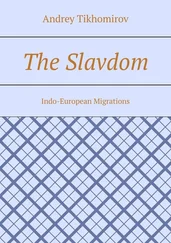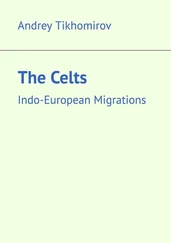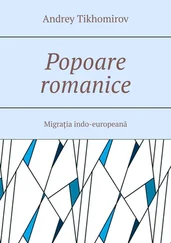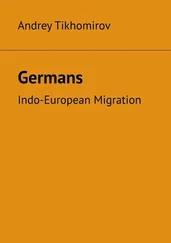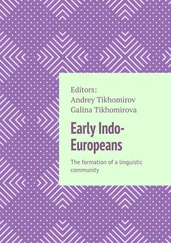1 ...6 7 8 10 11 12 ...21 By contrast, more inclusive approaches regard grammaticalization as an expansion of grammar, and generally as an enrichment of languages (cf. e.g. von Fintel 1995; DeLancey 2001; Himmelmann 2004; Brinton & Traugott 2005; Croft 2006). Among others, an advocate of this view is DeLancey (2001): “The word grammaticalization […] implies a process of becoming ‘grammatical.’ The reference can be taken as being to lexical morphemes becoming grammatical ones, or, more broadly, to any linguistic construct (a morpheme, a syntactic construction, or a discourse pattern) becoming part of the grammatical system of a language.” Importantly, in DeLancey’s view, grammaticalization not only affects morphemes, but also linguistic units embedded within greater constructions or patterns; in addition, it not only causes the development of morphology, but also of all structures of languages. Brinton & Traugott (2005: 99) adopt a similarly broad definition: “Grammaticalization is the change whereby in certain linguistic contexts speakers use parts of a construction with a grammatical function. Over time the resulting grammatical item may become more grammatical by acquiring more grammatical functions and expanding its host-classes.” Thus, to the foundational element of expansion, Brinton & Traugott add that of context expansion, or paradigmaticization. Croft’s (2006: 366) definition is even wider: grammaticalization is “the process by which grammar is created.” As Fischer (2011b) notes, a number of linguists even employ “grammaticalization” as a synonym for “change”, though not every linguistic change, for example sound change, can qualify as a grammaticalization.
The analysis of the developments of Indo-European preverbs can take advantage both of the inclusive and of the exclusive approach to grammaticalization outlined so far. Specifically, on the one hand, the criterion of obligatoriness is crucial for understanding the developments of Vedic and Homeric Greek preverbs (cf. Chapters 4 and 5). We will see that the occurrence of a preverb gains increasing obligatoriness to express certain types of spatial and non-spatial meanings. On the other hand, the wider approach, by taking into consideration semantic bleaching and the concomitant context expansion undergone by grammatical items, is of particular importance for Chapters 6 and 7, in which Old Church Slavic and Old Irish preverbs are analyzed.
2.2.3. The continuum of grammaticalization
As DeLancey (2001) points out, a grammaticalization process entails changes at every level of language. Notably, although all changes outlined below typically occur in grammaticalization processes, independently of one another, they are not essential for grammaticalization to take place (Bybee, Perkins & Pagliuca 1994).
At the semantic and pragmatic level, a grammaticalization process involves changes such as semantic bleaching, semantic specialization through metaphor, reanalysis through pragmatic inference, lexicalization – the process by which originally independent lexemes become parts of new lexical items (cf. Section 2.2.5), and “referent conflation”. A referent conflation is a semantic change in which two conceptually distinct referents are reanalyzed as one. For example, in the development of an adposition from a relational noun, e.g. atop + noun from *on the top of + noun , one can see the conflation of two referents into one ( top + noun > noun ) (DeLancey 2001).
In the layers of syntax and morphology, changes such as reanalysis and alterations in constituent structure also can occur. In addition, as noted earlier (Section 2.2.2), grammaticalization often involves obligatorification (Lehmann 1995[1982]). However, some scholars, such as Heine & Kuteva (2007: 34), point out that, though obligatorification seems to be important, it is not necessary for grammaticalization to take place, and that it also occurs in language changes different from grammaticalization. Heine et al. (1991) and Heine & Kuteva (2007: 40–41) also speak of decategorialization in grammaticalization processes. Through decategorialization, a linguistic expression is likely to lose morphological and syntactic properties that were characteristic of its initial category but which are not central for the new grammatical function. For example, in English a number of gerund forms, such as barring, concerning, and considering, came to acquire prepositional functions. This development led such forms to lose a number of properties normally associated with the morphological category of verbs: e.g. the possibility of taking auxiliaries, and of being inflected for tense and aspect.
At the phonological level, morphemes can undergo phonetic erosion or cliticization (Heine & Kuteva 2007: 42ff.). In Himmelmann’s (2004) view, such changes result in a set of expansions (cf. Section 2.2.2): host-class expansion, in which expressions are generalized to more collocational contexts, syntactic expansion, in which expressions come to acquire new syntactic functions, and semantic-pragmatic expansion.
2.2.3.1. Gradualness and the stages of grammaticalization
Gradualness is a concept that affects linguistic change in general and grammaticalization in particular, and as such it is spread throughout diachronic stages. Gradualness can be understood as a two-fold concept. First, it describes how a linguistic change propagates among new groups of speakers, different situational contexts, and various stages of language. Second, it concerns the structural propagation of change: “gradualness refers to the fact that most change involves (a series of) micro-changes” (Traugott & Trousdale 2010: 23). Each step in this process represents an intermediate construction type in structural terms (Croft 2001: 313). In fact, by virtue of gradualness, more than one intermediate step in change may coexist in the same individual or community of speakers (cf. Section 2.2.3.3).
In contrast with Traugott & Trousdale (2010), who regard grammaticalization as a sequence of discrete changes, no matter how small these are, DeLancey (2001) conceives of the whole grammaticalization as a continuum : the distinguishing of a number of discrete processes only results from linguists’ idealization. Such processes need not be laid out in a strict serial order. However, some of them are likely to trigger other successive processes by providing them with the necessary conditions for development.
In this work the stages of grammaticalization are described mainly using DeLancey’s model (2001). First, the essential precondition for grammaticalization is a productive syntactic construction: a lexeme or some lexemes must frequently occur in certain constructions owing to some semantic or pragmatic motivations. By virtue of their frequency, such constructions undergo conventionalization, or in DeLancey’s terms “undergo a functional specialization” (e.g. the face of NP, finish VP, and so on). In what one may call usage-based models of language, frequency is invoked as one of the main forces, or even as the main force, driving grammaticalization, or even linguistic change in general (cf. e.g. Bybee & Hopper 2001; Bybee 2011).
At a later stage, such a construction undergoes semantic bleaching (as defined above), and consequently acquires the possibility of being used in a wider range of contexts. Notably, such a construction also occurs in contexts conflicting with its original and more specific meaning. For example, when the noun front becomes a part of the adposition in front of , it loses the portion of its meaning that directly refers to the human body (Heine & Kuteva 2007: 40).
The next stage involves decategorialization (or re categorialization; cf. Heine et. al. 1991; Heine & Kuteva 2007; Section 2.2.3): the construction loses (some of) the morphosyntactic behaviors characteristic of its original category. For example, as discussed in Chapter 3, as soon as Indo-European local adverbs start developing into preverbs and/or into adpositions, they lose the typical syntactic freedom of adverbs. Such categorial reassessment can have two results. The developed form can enter one of the existing morphosyntactic categories of the language. Alternatively, the form comes to show behaviors that differentiate it from all the other items of the language. In this latter case, the said form gives rise to a new morphosyntactic category. This is the case of Proto-Indo-European local adverbs undergoing functional bifurcation into preverbs and adpositions.
Читать дальше




